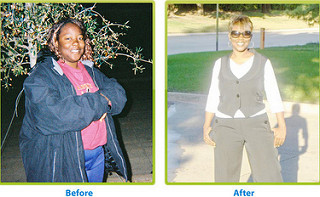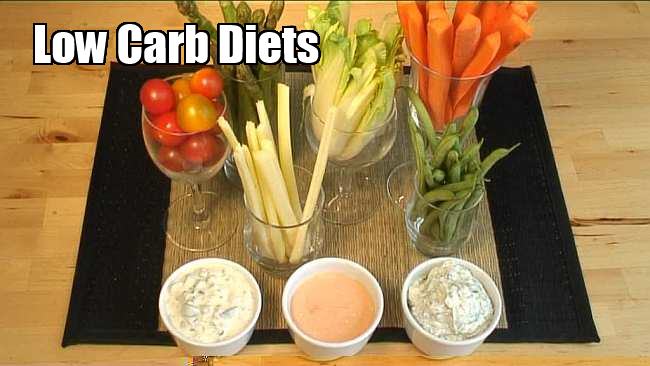How to Create Your Own Diet for Weight Loss
Designing your own diet to lose weight is a great idea. Create a diet following your own taste preferences as much as possible, while still allowing you to lose. Although you may think you want a drastic change, an avalanche of new regimens is unrealistic and rarely gets you to your goal. The ideal is small changes in a healthy direction over time. This method takes thought and planning, but it works.
Steps
- 1 Find out what your diet is now.
- 2 Keep a careful food diary for seven “normal” days. Use this information to get an idea of what you are doing now.
- 3 In your food diary you will record for each day:
- 4 What am I eating? How much at each meal and snack? (Is your bowl of cereal one cup or two? How much milk? What kind?)
- 5 How many calories do I consume in a “normal” day? (Buy a calorie count book, examine commercial packaging or query on the web. The USDA site, mypyramid.gov has a new, easy search to help you identify calorie counts, calories in added extras and also food groups.
- 6 Add the calories for all seven days and divide by seven. This will give you a good idea of how many calories your particular body needs to maintain that weight.
- 7 Design the new diet.
- 8 A safe weight loss, one that will most likely be permanent, is one pound a week. One pound is equal to 3500 calories. 3500 divided by seven days of the week = 500 calories a day. Take your daily average calorie count and subtract those 500 calories. For example, if you are eating an average of 2200 calories a day according to your diary, your new target is 1700, for a one pound a week loss. No matter what your calculation, do not lower your intake to less than 1500 without advice from a Registered Dietitian.
-
9
As much as possible, substitute healthier foods that you like and smaller portions of higher calorie foods you like in order to reach your new lowered daily calorie count. Again, the mypyramid.gov site gives multiple ways to eat each type of food and the calorie counts and nutrition for each one. Examples:
- Instead of whole milk, drink 2% or eat non-fat, fruit-flavored yogurt.
- Search for lower calorie, higher fiber cereals and breads.
- Eat half a hamburger rather than the whole, or take out the meat and some toppings for your meal and leave the bun. A serving of meat protein should not be more than 4 ounces, about the size of a deck of cards.
- Make any sandwich you like, but lower the calorie count by cutting the portion size or substituting. Try spicy mustard instead of mayo, a plain pita roll up rather than two slices of bread, a light sprinkle of shredded parmesan cheese rather than cheddar.
- Half a baked potato with sprayed with a low calorie salad dressing rather than the whole potato with your usual extras.(Honey mustard and ranch are both yummy on potato.)
- If chocolate is important to you, have two or three chocolate kisses. Let each one melt in your mouth. An excellent chocolate fix and only about a hundred calories!
- Lightly salted popcorn is a good substitute for any kind of chip.
- A huge calorie savings is possible simply by changing the way your favorites are prepared. Avoid frying and rich sauces. Go for broil, roast, steam, bake or fresh.
- 10 Go through your seven day record and see how many meals you can redesign to be just as satisfying to you, but less caloric. Keep in mind that a healthy distribution of food types is approximately 60% Carbohydrates, 20% Fats and 20% Proteins. As you work up a plan, make changes in favor or vegetables, fruits and whole grains in your carbohydrates, with an emphasis on the veggies to keep the calories low. Discover which fats are polyunsaturated or monounsaturated (on packaging) and exchange those for saturated and trans fats. Look to lean meat, fish and legumes for protein. Nuts are healthy and filling, too, but a serving is one ounce (160-200 calories). That’s about a quarter cup, no more.
- 11 If you are not exercising, think about slowly fixing that part of your life, too. Find what you like, start slow and add a little at a time—not 20 minutes a day this week and an hour a day next week. Try 20 minutes this week and 22 next week. This is permanent. You will be doing it the rest of your life, so you have time to get to your goal. Movement is just another way in which you are nurturing you body, not punishing it.
-
5 Ways To Make Better Food Choices, According To Nutritional Psychologists
From the time you were a little kid, you've known that food does w
-
Losing Weight Does Not Have To Be Hard
TIP! Fad diets may sound like a fabulous way to jump-start yo
-
Food List for Weight Loss
Ever look at a 7 day meal plan and just get confused? The diet
-
3 Tips That Lead To Lasting Weight Loss
3 Tips That Lead To Lasting Weight Loss I spent years s
-
How to Safely Lose Weight (for Teen Girls)
Lots of teen girls want to lose weight safely and fast, but they dont
-
Some Useful Tips For Weight Loss
There are different kinds of people in the world with different type
- DON'T MISS
- Burn That Extra Fat - And Lose Weight Now!
- 5 Healthy recipes with Cinnamon
- Weight Loss For All The Wrong Reasons
- How to Lose a Pound
- Home Remedies And Natural Treatment For Weight Loss
- How to do crunches to strengthen your core
- Meet the Writer Who Tried 14 Insane Celebrity Diets
- Foods to Include in a Simple Diet Plan for Weight Loss
- Top 10 calorie burning cardio exercises
- Motivation to Lose Weight: How Do I Stay Motivated?




